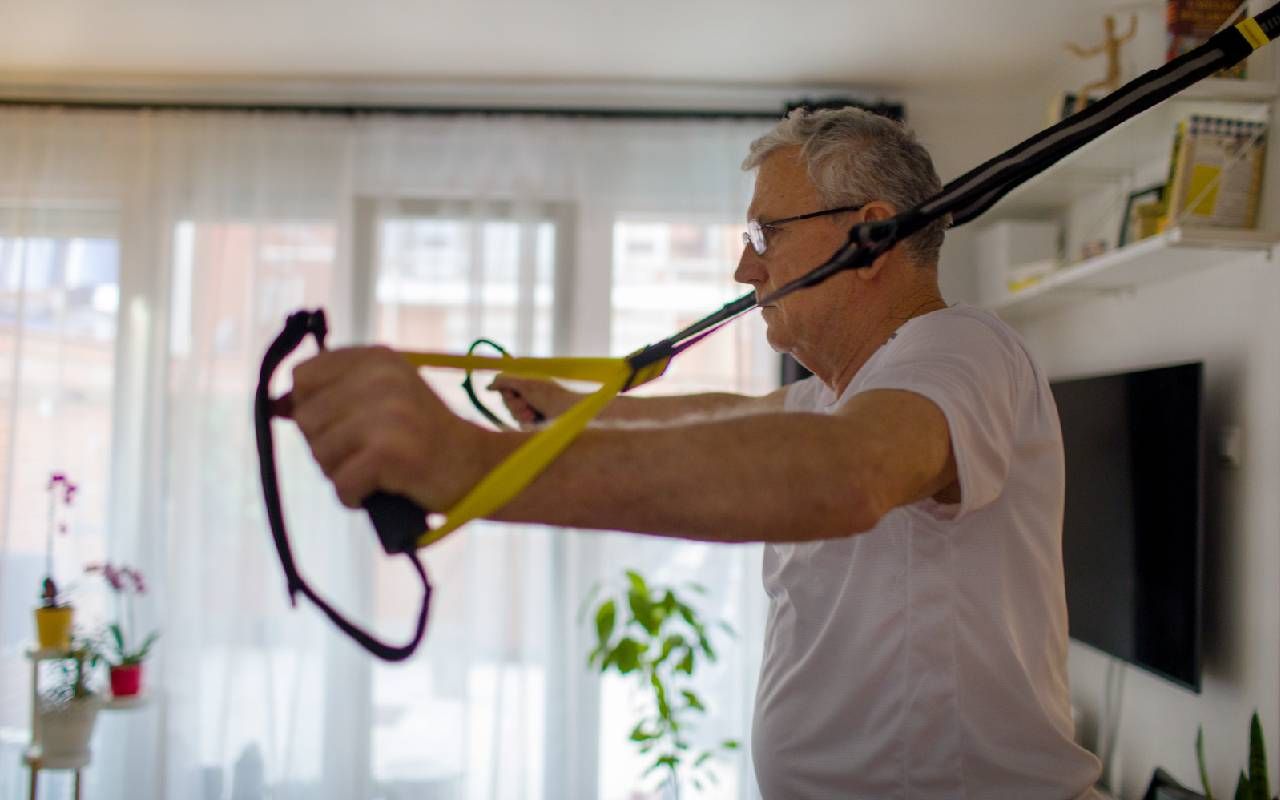The Best Cure For Chronic Pain? It's Not What You Think
While surgery and pain medications can have impact, it turns out that regular physical activity is the most potent and least invasive pain reliever available
Is pain a natural part of aging? Perhaps because some studies show that up to 85% of adults over 60 experience regular pain that disrupts their daily lives, you might think so. However, you may be shocked to learn that there is no inevitable physiological process that older people experience that is guaranteed to cause pain.

Studies show chronic pain conditions lessen with age and your ability to perceive pain may diminish with time.
Studies show chronic pain conditions lessen with age, and your ability to perceive pain may diminish with time. If pain isn't inevitable, what separates older adults who suffer from chronic pain from those who don't? How can someone with chronic pain lessen their symptoms and improve their quality of life?
What Causes Chronic Pain?
According to the Cleveland Clinic, chronic pain is pain that lasts over three months and negatively impacts your life. Untreated chronic pain is a huge issue for older adults and can lead to falls, injuries, a loss of independence, depression and anxiety.
Because many older people believe that pain is natural, they may not seek appropriate treatment and suffer unnecessarily. Many different conditions can contribute, but the most common culprits for people over 60 include:
- Musculoskeletal conditions
- Neuropathy
- Arthritis
- Fibromyalgia
- Connective tissue disorders
Unique Challenges of Treating Chronic Pain Over 60
Some studies show that older adults are more likely to take a stoic approach to their pain and try to "tough it out." This natural tendency, combined with the rampant fear of becoming addicted to opioid pain medication, means many older people are suffering silently.
Despite the benefits of exercise, many older adults do not regularly participate.
Yet the actual risk of older adults becoming addicted to opioids is low, only 3%, according to a study published in the Pain Medicine journal. So, while there certainly are some medications that older people should avoid, traditional medical treatments, including surgery and pain medication, are safe and effective ways to treat some causes of chronic pain and should not be overlooked.
If you've already explored all your medical options or you want to supplement them, exercise shows tremendous promise for managing your pain. Yet despite the documented benefits of exercise, many older adults do not regularly participate.
While surgery and pain medications can improve your health and longevity, it turns out that regular physical activity is the most potent and least invasive pain reliever available. We spoke with Melissa Koehl, a physical therapist with 22 years of experience who now specializes in helping patients with connective tissue disorders treat chronic pain, to discuss her top pain management tips for older adults.
"I have worked with a lot of older adults who would greatly benefit from lifting (weights) but are afraid to start. It takes some work to get them on board," said Koehl.
Regular exercise is an excellent way to manage chronic pain and reduce other associated symptoms such as low mood and energy.
Regular exercise, such as cardio or strength training, can reduce chronic pain symptoms in two ways. First, it releases special chemicals called beta-endorphins, which act as natural opioids in the body. These endorphins not only produce that happy post-exercise haze, but they treat pain directly by acting like morphine on affected pain receptors.
Regular exercise is an excellent way to manage chronic pain and reduce other associated symptoms such as low mood and energy. Strength training, in particular, releases the most endorphins and is crucial for people over 60.
"I can't think of a single situation where I would not encourage my patient to participate in strength training," said Koehl. In addition to those two mechanisms, another fascinating side effect of regular exercise is increasing your pain tolerance.
Strength training has even more benefits for older adults in the long term as it helps you fight off bone and muscle loss and will help strengthen your tendons. All of these adaptations will keep you moving with less pain for longer. But no matter what type of exercise you choose, regular activity releases endorphins, improves mobility and effectively treats chronic pain symptoms.
Just remember that exercise is not a race, and when in doubt, always progress slowly.
Exercise as Pain Medicine: Tips on Getting Started
When it comes to choosing which exercise program is right for you, Koehl says there is no one-size-fits-all approach, and each individual needs a program that addresses their health holistically.
Koehl also notes that even though the benefits of strength training are significant, older adults with connective tissue disorders such as hypermobile Ehlers-Danlos syndrome (hEDS) should progress slowly under proper supervision due to their unique challenges.
Here are her 5 best tips for treating chronic pain with exercise for adults over 60.
- Get medically evaluated first. Exercise is crucial and can significantly increase your quality of life. Still, it will not treat underlying disease or physical abnormalities, so you must get evaluated by your health care professional to understand the source of your pain and to get cleared for physical activity.
- Consult a physical therapist if possible. If you have access, seek out a physical therapist. They are the movement experts who can further diagnose your injury and help you on the path to rehabilitation. Depending on your state and insurance status, you may need to see a doctor to get a referral first. Check with your insurance company for their services and the best care access.
- Work with a qualified and experienced fitness professional. Working with an experienced fitness coach is essential, especially for older adults new to strength training or with a complex medical history. However, personal training has a low barrier to entry and does not require any advanced training or education. It's crucial then that you vet your trainer and make sure they are certified with a reputable training body such as the International Sports Science Association (ISSA), National Academy of Sports Medicine (NASM) or American Council on Exercise (ACE). In addition to being certified, your trainer should have ample experience working with older adults with complex medical histories. They should thoroughly intake and adjust your training program to your current needs and goals.
- Go slow. Koehl admits that your progression with exercise largely depends on your exercise history and current fitness level. If you're a former competitive athlete, you will likely progress faster than someone who has never touched a weight. Just remember that exercise is not a race, and when in doubt, always progress slowly. Older adults with complex medical conditions will likely require more rest between sessions as they adjust, so you must listen to your body and rest when needed.
- Movement is play, so have fun! When you're experiencing chronic pain, the last thing you may want to do is get up and move. Remember that all exercise releases endorphins, which will reduce your pain and give you more energy, so keep trying different types of movement until you find one you love.
If you're struggling with motivation, try a fitness class or a walking group for added company and accountability. Sometimes, the only thing that gets us moving is knowing someone is counting on us, and that's ok. All movement is good; there's no better time to start than now.


